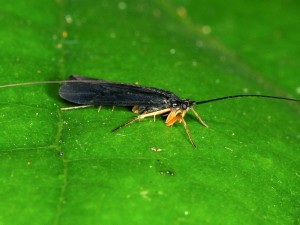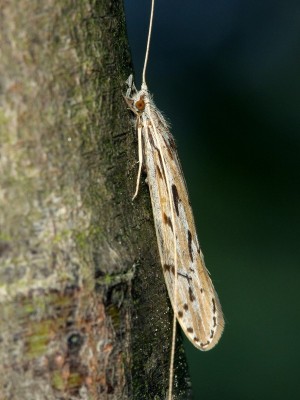Order Trichoptera

Queensland rainforest.
Although there are approximately 600 species of Caddisflies in Australia, they are quite often overlooked, probably because of their typically drab colours and nocturnal behaviour. But they do play an important role in measuring environmental health. As larvae, they live under water and certain species have certain requirements for temperature, oxygen and other chemical levels, so an abundance or lack of a particular species can give a good indication of the quality of the water.
Caddisflies have elongated bodies, medium to long slender legs, long filiform antennae, and two pairs of membranous wings. The wings are usually covered in fine hairs and this often leads to them being mis-identified as moths (Lepidoptera), to which they are related. The main difference between the two is that Caddisflies lack the long, curled proboscis that moths have. Caddisflies have reduced mouthparts and the adults don’t feed, so their life is quite short.

from Victoria.
Female Caddisflies lay hundreds of eggs on or near water. The larvae spend their lives in the water, moulting half a dozen times before pupating and eventually emerging as winged adults. The larvae have a varied diet, which can include aquatic plants and algae, and other aquatic insects. Some species build silken webs to trap prey. To protect themselves against predators, the larvae encase themselves in plant matter or sand.
Caddisflies are usually found near fresh water, but the larvae of a few species can survive in tidal areas. As I mentioned earlier, the adults are generally nocturnal, so during the day they tend to rest on tree trunks or amongst the undergrowth, which makes them just that little bit harder to spot.
I apologise in advance, but I haven’t been able to confidently identify any of the Caddisflies I have found so far, mainly because I haven’t come across any decent visual references yet. Any assistance will be gratefully accepted.
~~~~~
Click here to see the Caddisfly photo galleries
~~~~~